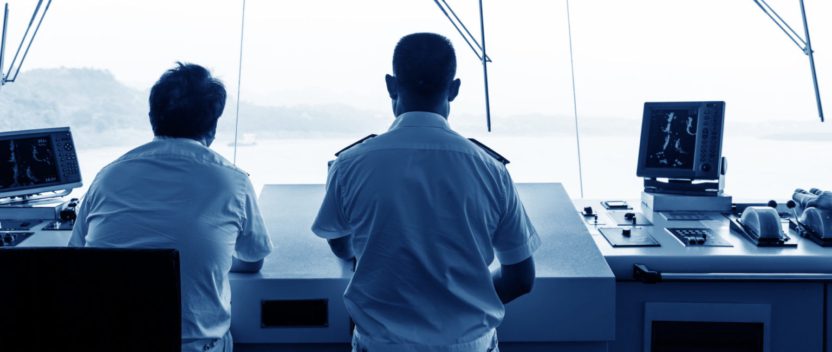It takes two: smarter ships, smarter people
The impact that an era of ‘smart shipping’ will have on seafarers is the subject of much debate – and some concern – among providers of manpower, training and those writing regulations. If as seems inevitable some autonomous vessels are developed in future, this will still leave the vast majority with people onboard.
How will they respond and react to much smarter machines, new routines, lower manning and a job role that might look very different to the traditional structure of a mariner’s working life?
It’s a subject that is taking up a lot of thinking time and the outcomes, while challenging, suggest that while mariners must face up to the impact of greater automation and more data, they will continue to play a central role in ship operations.
As Dr Maria Carrera-Arce, Senior Specialist, Strategic Research Group at Lloyd’s Register told the recent Ship Efficiency event, the consideration of human factors is critical in order to proceed with smart shipping, as they are directly associated with the safe implementation and uptake of new technology within the marine industry.
“Human factors affect all elements of the relationship between people, systems and their performance. The research we are doing is designed to improve efficiency and safety by bringing together knowledge from ship crews, shore-based management, regulatory bodies, designers, shipyards and other relevant parties.”
Class body IACS has also recognised the importance of the human element in terms of training for new technologies mariners will be using onboard. As Dr Carrera pointed out, the scope is huge, as it must address the complete performance of shipboard systems. “The fundamental aspects are usability of systems and the competence of people. There needs to be a balance between the two across the whole ship and systems lifecycle,” she added. “To make the ship usable in terms of safety and efficiency we must take a human-centred approach to user needs and involve them in the design of systems.”
The reality is that the workforce may not yet be prepared to work with these new technologies and both education and training needs to change in order to manage the complexity of risk – and the change process itself. To do this, the industry needs to define the future role of humans, which activities humans will perform and which machines will manage, she added.
“Implementation of the smart ship must run hand in hand with human element aspects because newhuman roles and competencies will be needed for smart ships. Training must consider that human activities may become more cognitive and less physical with some mariners managing more data and analytics. Seafarers need new skills if we want to make smart shipping safe.”
Speaking at the same session, Dleep Fotedar, Curriculum Head & Dr Nicola Crawford, Faculty Director, Nautical Studies at City of Glasgow College outlined how those at the sharp end of training are helping seafarers manage the transition.
As Fotedar pointed out, it is hard to generalise about where a competent seafarer will come from and this will not change in future. Making that person competent is a process; what is needed is an emphasis on the soft skills required for much deeper thinking.
“Is technology going to fix our challenges? No, but psychology can help, they go hand in hand. You can use simulators to learn navigation and the engine room but use of technology is not sufficient unless you use psychology too.”
He cited an example where students are asked to perform a course alteration on an ECDIS. To make it more interesting he changed the GPS position inputs on the simulator. “What we found was that 90% of students kept going until they could see seagulls walking. Then you are aground. They look at the available information but they don’t process it.”
Humans analyse such inputs by ‘thinking fast and slow’, in the first system, using the mind to quickly processes and act. In the second system, a student will seek to analyse and apply other knowledge.
“You don’t have to be Einstein, you need to know the tricks,” he added. The problem is that users of electronic bridge systems looking at radar and ECDIS tend to believe what they see. “How we change is by becoming a deep learner. Competence a lot to do with behaviour, we need to focus more on deep thinking.”
It’s an approach his colleague Nicola Crawford spends her time applying to students, first by understanding the underlying tools of communication, then by applying teaching in a way that fits the student.
“Some 93% of how we communicate is unconscious, only 7% is the words we use. About 55% is physiology and 38% is in tone of voice and these are elements we have introduced into our training programmes,” she explains.
Humans have different systems of assessing and communicating and students can be streamed on how they communicate best. This enables trainers to identify their ways of working and understand how they best learn and communicate effectively.
“The industry has traditionally trained officers go onboard and work with huge pieces of technology but it also needs to invest in the human. They are in there using the technology and still making errors. Giving them the skills to manage technology is vitally important,” she adds.
But doesn’t all this fall away once a generational change take place? We are used to hearing that young cadets have an affinity to technology that will make them natural ECDIS users. Dr Crawford expresses caution.
“The generation coming through have a fantastic affinity with technology but they find it hard to analyse. They can be fantastic operators but they’re not always able to stop, think and question.”
Fotedar agrees the ‘Angry Birds’ generation can text without looking at the screen “but when it comes to ECDIS and ENCs they treat it like Angry Birds, expecting the system not to crash, not to have errors and they believe what they see”.
Teaching fallibility of technology is one thing but it is unarguable that as technology changes, teaching must change too. “Different ways of learning – rather than teaching – mean different ways of instruction, helping people understand the way they learn best,” says Crawford. “We want to be able to understand why people aren’t reacting, to push back and not always trust the system – and how to understand other people.”
Training programmes already test students on reactions to technology failures but for Dr Carrera, the continuing incidence of human failures makes the case for improving both, not assuming that replacing people with machines will solve the problem.
“The human element is much more than just errors. What issues are avoided because there is human intervention? Who says taking out people is going to remove completely human failures? There will still be technology errors. We need to improve both elements.”


